April 15, 2025
How do you fix a problem you can’t see? For decades, many sources of greenhouse gases (GHGs) like carbon dioxide and methane have escaped into the atmosphere undetected. Satellites are making the invisible visible.
Overcoming Ground-based Limits
Researchers have many tools at their disposal to measure GHG, from ground-based monitors to weather balloons to ocean buoys. These tools have given them fairly precise estimates of the total amount of GHGs in the atmosphere. But they aren’t great at pinpointing the source of GHG emissions.
Ground-based sensors provide accurate local measurements of GHG emissions. Aerial surveys from drones and airplanes can identify localized sources. But these lack global coverage.
“Satellites play a crucial role by providing comprehensive, continuous coverage of the entire planet, including remote regions like oceans, deserts and polar areas where ground-based sensors and aerial surveys are limited,” said IEEE Senior Member Inderpreet Kaur.
How Satellites Do It
Atmospheric gases absorb sunlight at different wavelengths. Most GHG-monitoring satellites rely on spectral imagers that detect these absorption patterns, making it possible to spot methane and CO2 levels in the atmosphere. Most GHG-monitoring satellites operate on the short-wave infrared spectrum, which is particularly effective for CO2 and methane.
Sensor technology is improving. The latest instruments use hyperspectral imaging to capture hundreds of wavelength bands. This enables the detection of multiple gases and helps researchers tell the difference between gases and sensor noise.
Resolution Matters
Some Earth observation satellites have been able to detect GHGs for about three decades, though they were built for other purposes.
The earliest satellite designed to monitor GHGs as its primary mission, the Japanese Aerospace Exploration Agency’s Greenhouse Gases Observing Satellite (GOSAT) launched in 2009. GOSAT used a wide-swath imaging approach that monitored large-scale trends in GHG concentrations.
It was followed by NASA’s Orbiting Carbon Observatory-2 (OCO-2) and several other satellites, including China’s Satellite for Atmospheric CO2, also known as TanSAT. Together, these wide-swath satellites helped provide important data for climate models. The data also revealed a widespread undercounting of GHG emissions.
That led researchers to begin hunting for sources of GHG emissions, especially methane, which has approximately 80 times the warming power of CO2 over 20 years. Doing so would require launching satellites with finer and finer resolutions. The Greenhouse Gas Satellite – Demonstrator or GHGSat-D, also known as Claire, launched in 2016 by a private organization, carried an imager about 20 times more powerful than than OCO-2, with each pixel capturing a 50-meter by 50-meter plot of ground.
“With higher resolution, smaller emissions sources, like leaks from pipelines or industrial sites, can be detected and monitored more accurately,” Kaur said. “Without sufficient resolution, emissions may be missed or misattributed, making it difficult to address the concerned issues effectively. “
How Many Satellites Track GHG?
As of 2025, at least nine satellites have been launched with dedicated global GHG monitoring missions, according to the Committee on Earth Observation Satellites’ database of GHG satellite missions.
An additional 11 source-detection missions — some with multiple satellites — have focused on identifying specific methane and CO2 emitters. Dozens more general-purpose Earth observation satellites also carry sensors capable of GHG detection.
There are also numerous general-purpose satellites in orbit with hyperspectral imagers on board that can detect GHG levels.
Use Cases in Action
- Researchers using new machine learning models, working with a combination of wide-swath monitoring sites that communicate with high-resolution ones, spotted nearly 3,000 methane super emitters in 2021 ..
- The UN’s International Methane Emissions Observatory (IMEO) to monitor methane leaks from oil and gas infrastructure has issued more than 1,200 notices to countries and companies.
- In 2023, scientists used data from a private satellite network to spot a large methane leak from a faulty natural gas pipeline. No one on the ground had noticed the leak, which was releasing over 200 kg of methane per hour.
- NASA recently used data from its OCO-2 satellite to track carbon emissions on a national scale for 100 countries worldwide.
What’s Next
There are at least 10 different GHG-mapping satellite missions planned for 2026 and beyond, three dedicated to broad monitoring of worldwide GHG levels and seven aimed at detecting plumes of emissions from natural and man-made sources.
Machine learning is being leveraged to analyze the vast amount of data the satellites produce, automating the process of identifying the proverbial needle in haystack.
One emerging trend involves using satellites in stationary orbit to continuously monitor specific regions, like North America, the Middle East, and the Arctic, where the melting of permafrost has the potential to release large amounts of methane into the atmosphere.
Another emerging trend: GHG-mapping is, increasingly, the work of private organizations that treat leak detection as a business and partnerships between governmental and non-governmental organizations. One such effort, MethaneSAT, can detect gas concentrations as tiny as three parts per billion.
A factor enabling all this: the physical hardware has shrunk in both size and cost, which has led to the deployment of many small satellites that can work together. These satellite constellations mean larger quantities of data and better imaging resolution.
Go Deeper: Interested in learning more about earth science and the incredible people behind it? Check out the “Down to Earth” podcast from the IEEE Geoscience and Remote Sensing Society.






 Meaningful Momentum or Running in Place?
Meaningful Momentum or Running in Place? AI Through Our Ages
AI Through Our Ages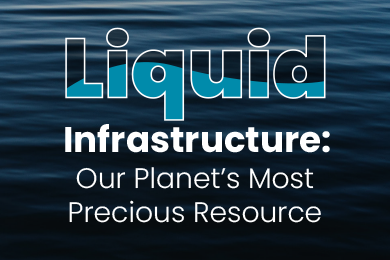 Liquid Infrastructure: Our Planet's Most Precious Resource
Liquid Infrastructure: Our Planet's Most Precious Resource The Impact of Technology in 2025
The Impact of Technology in 2025 Quantum and AI: Safeguards or Threats to Cybersecurity?
Quantum and AI: Safeguards or Threats to Cybersecurity? Why AI Can't Live Without Us
Why AI Can't Live Without Us Bits, Bytes, Buildings and Bridges: Digital-Driven Infrastructure
Bits, Bytes, Buildings and Bridges: Digital-Driven Infrastructure Impact of Technology in 2024
Impact of Technology in 2024 Emerging AI Cybersecurity Challenges and Solutions
Emerging AI Cybersecurity Challenges and Solutions The Skies are Unlimited
The Skies are Unlimited Smart Cities 2030: How Tech is Reshaping Urbanscapes
Smart Cities 2030: How Tech is Reshaping Urbanscapes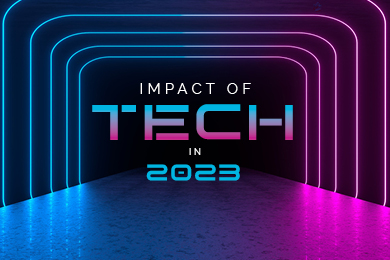 Impact of Technology 2023
Impact of Technology 2023 Cybersecurity for Life-Changing Innovations
Cybersecurity for Life-Changing Innovations Smarter Wearables Healthier Life
Smarter Wearables Healthier Life Infrastructure In Motion
Infrastructure In Motion The Impact of Tech in 2022 and Beyond
The Impact of Tech in 2022 and Beyond Cybersecurity, Technology and Protecting Our World
Cybersecurity, Technology and Protecting Our World How Technology Helps us Understand Our Health and Wellness
How Technology Helps us Understand Our Health and Wellness The Resilience of Humanity
The Resilience of Humanity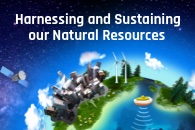 Harnessing and Sustaining our Natural Resources
Harnessing and Sustaining our Natural Resources Creating Healthy Spaces Through Technology
Creating Healthy Spaces Through Technology Exceptional Infrastructure Challenges, Technology and Humanity
Exceptional Infrastructure Challenges, Technology and Humanity The Global Impact of IEEE's 802 Standards
The Global Impact of IEEE's 802 Standards Scenes of our Cyber Lives: The Security Threats and Technology Solutions Protecting Us
Scenes of our Cyber Lives: The Security Threats and Technology Solutions Protecting Us How Millennial Parents are Embracing Health and Wellness Technologies for Their Generation Alpha Kids
How Millennial Parents are Embracing Health and Wellness Technologies for Their Generation Alpha Kids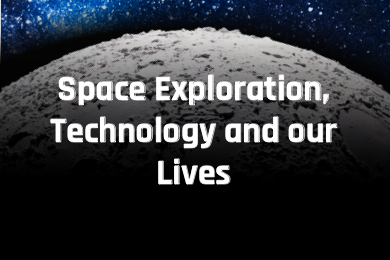 Space Exploration, Technology and Our Lives
Space Exploration, Technology and Our Lives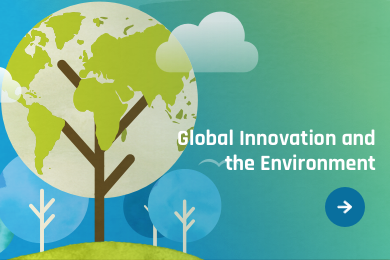 Global Innovation and the Environment
Global Innovation and the Environment How Technology, Privacy and Security are Changing Each Other (And Us)
How Technology, Privacy and Security are Changing Each Other (And Us) Find us in booth 31506, LVCC South Hall 3 and experience the Technology Moon Walk
Find us in booth 31506, LVCC South Hall 3 and experience the Technology Moon Walk Virtual and Mixed Reality
Virtual and Mixed Reality How Robots are Improving our Health
How Robots are Improving our Health IEEE Experts and the Robots They are Teaching
IEEE Experts and the Robots They are Teaching See how millennial parents around the world see AI impacting the lives of their tech-infused offspring
See how millennial parents around the world see AI impacting the lives of their tech-infused offspring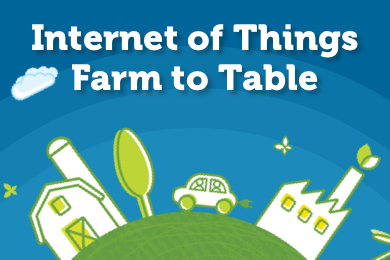 Take the journey from farm to table and learn how IoT will help us reach the rising demand for food production
Take the journey from farm to table and learn how IoT will help us reach the rising demand for food production Watch technical experts discuss the latest cyber threats
Watch technical experts discuss the latest cyber threats Explore how researchers, teachers, explorers, healthcare and medical professionals use immersive technologies
Explore how researchers, teachers, explorers, healthcare and medical professionals use immersive technologies Follow the timeline to see how Generation AI will be impacted by technology
Follow the timeline to see how Generation AI will be impacted by technology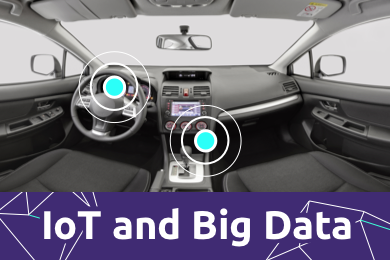 Learn how your IoT data can be used by experiencing a day in a connected life
Learn how your IoT data can be used by experiencing a day in a connected life Listen to technical experts discuss the biggest security threats today
Listen to technical experts discuss the biggest security threats today See how tech has influenced and evolved with the Games
See how tech has influenced and evolved with the Games Enter our virtual home to explore the IoT (Internet of Things) technologies
Enter our virtual home to explore the IoT (Internet of Things) technologies Explore an interactive map showcasing exciting innovations in robotics
Explore an interactive map showcasing exciting innovations in robotics Interactively explore A.I. in recent Hollywood movies
Interactively explore A.I. in recent Hollywood movies Get immersed in technologies that will improve patients' lives
Get immersed in technologies that will improve patients' lives